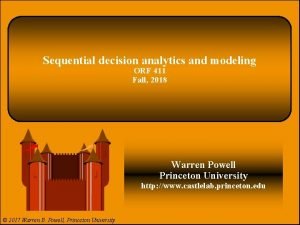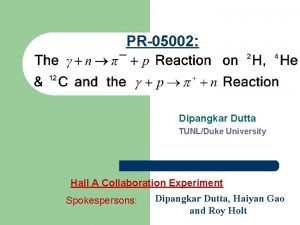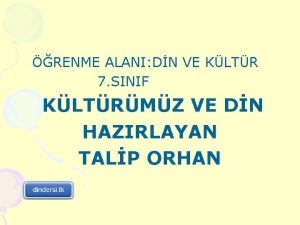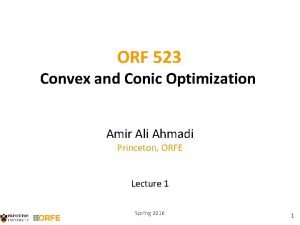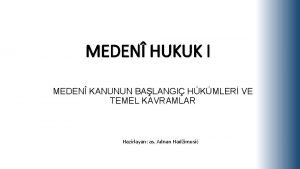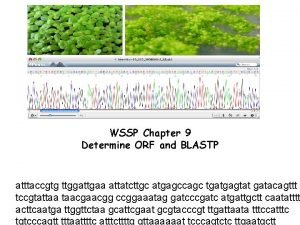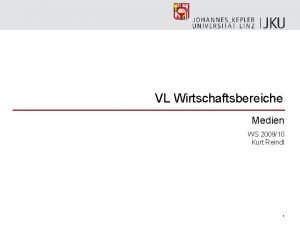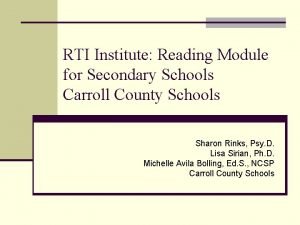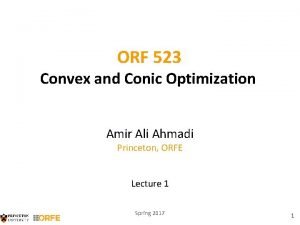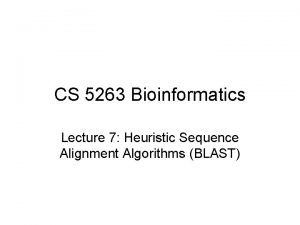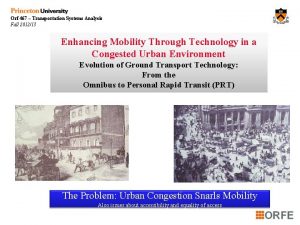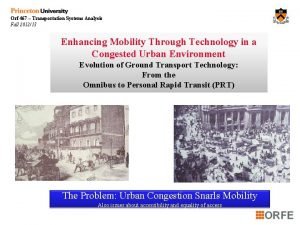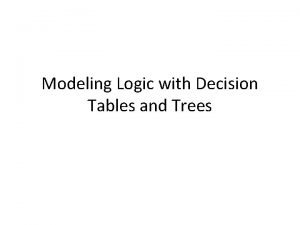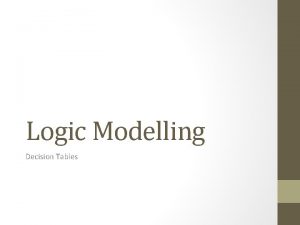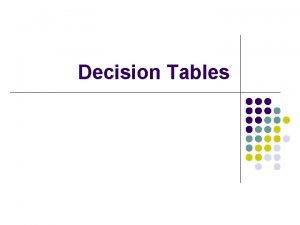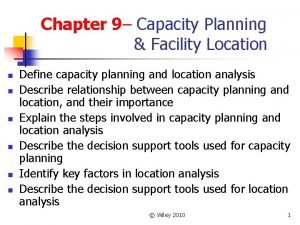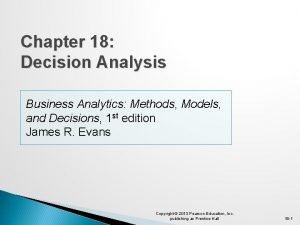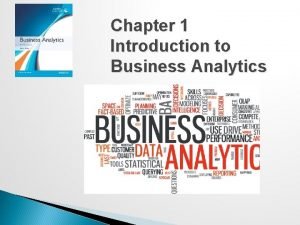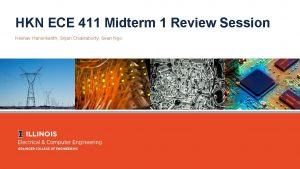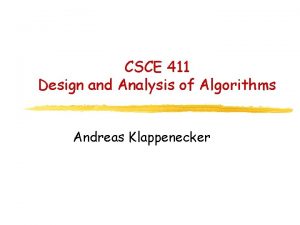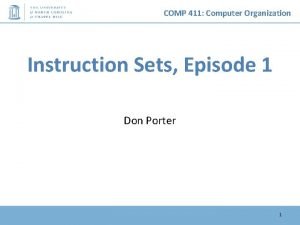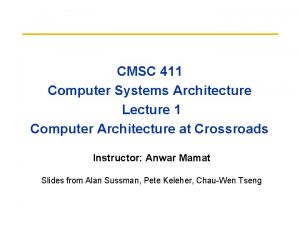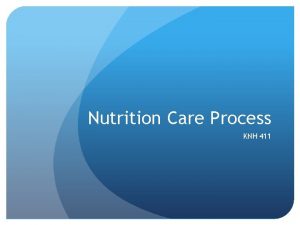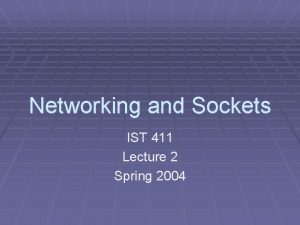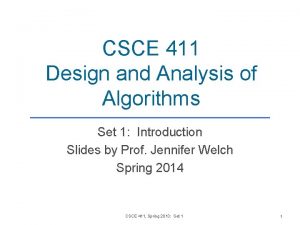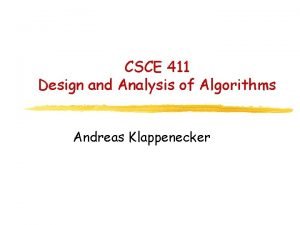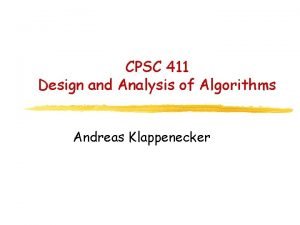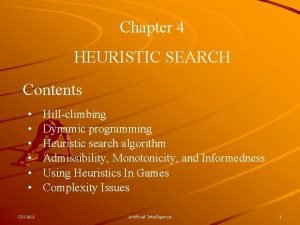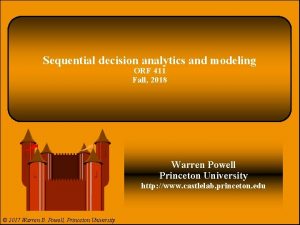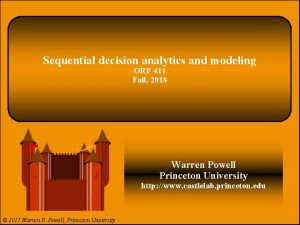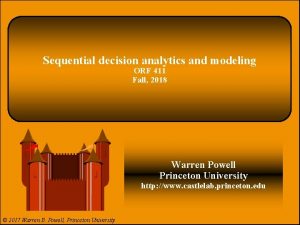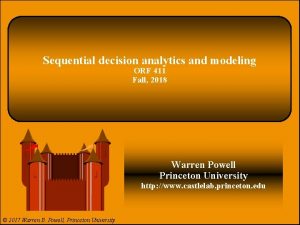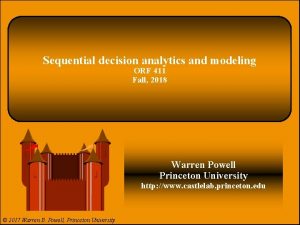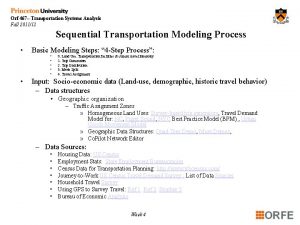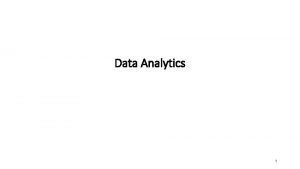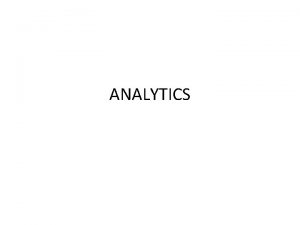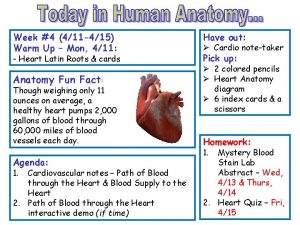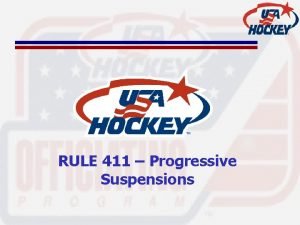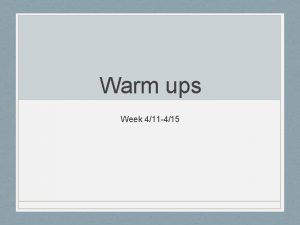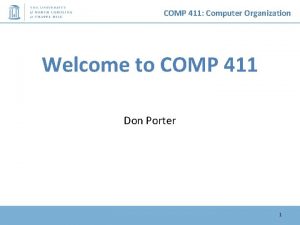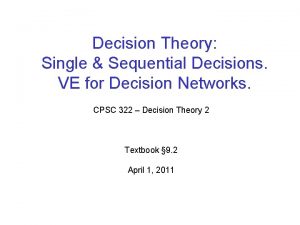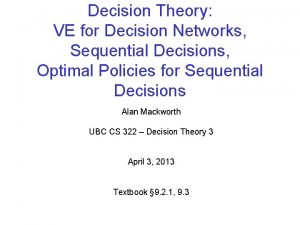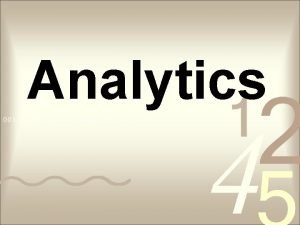Sequential decision analytics and modeling ORF 411 Fall











































- Slides: 43

Sequential decision analytics and modeling ORF 411 Fall, 2018 . Warren Powell Princeton University http: //www. castlelab. princeton. edu © 2017 Warren B. Powell, Princeton University

Week 1 - Wednesday Machine learning © 2018 W. B. Powell Slide 2

n Three core approximation architectures » Lookup tables » Parametric models • Linear in the parameters • Nonlinear (in the parameters) » Nonparametric © 2018 W. B. Powell

Approximating strategies n Lookup tables » Independent beliefs » Correlated beliefs • A few dozen observations can teach us about thousands of points. » Hierarchical models • Create beliefs at different levels of aggregation and then use weighted combinations © 2018 W. B. Powell

Approximating strategies n Parametric models » Linear models • Might include sparse-additive, where many parameters are zero. » Nonlinear models • (Shallow) Neural networks, … © 2018 W. B. Powell

Approximating strategies n Nonparametric models » Kernel regression • Weighted average of neighboring points • Limited to low dimensional problems » Locally linear methods • Dirichlet process mixtures • Radial basis functions » Splines » Support vector machines » Deep neural networks © 2018 W. B. Powell

Lookup tables Frequentist Bayesian – Independent Bayesian - correlated © 2018 W. B. Powell Slide 7

Lookup tables n Frequentist updating - Batch © 2018 W. B. Powell

Lookup tables n Frequentist updating - Recursive © 2018 W. B. Powell

Lookup tables n Bayesian – independent beliefs » Discuss Bayesian setting © 2018 W. B. Powell

Lookup tables n Bayesian – independent beliefs © 2018 W. B. Powell

Lookup tables n Bayesian updating – correlated beliefs © 2018 W. B. Powell

Lookup tables n Bayesian updating – correlated beliefs © 2018 W. B. Powell

Lookup tables n Bayesian updating – correlated beliefs © 2018 W. B. Powell

Lookup tables n Bayesian updating – correlated beliefs © 2018 W. B. Powell

Lookup tables n Bayesian updating – correlated beliefs © 2018 W. B. Powell

Correlated beliefs © 2018 W. B. Powell 17

Correlated beliefs n After four measurements: Estimated concentration Measurement Knowledge gradient Value of another measurement New optimum at same location. » Whenever we measure at a point, the value of another measurement at the same point goes down. The knowledge gradient guides us to measuring areas of high uncertainty. © 2018 W. B. Powell 18

Correlated beliefs n After five measurements: Estimated concentration Knowledge gradient © 2018 W. B. Powell 19

Linear models © 2018 W. B. Powell Slide 20

Linear models n Examples: » Independent variables, covariates, basis functions © 2018 W. B. Powell

Linear models © 2018 W. B. Powell

Linear models © 2018 W. B. Powell

Linear models n Recursive least squares-Stationary data © 2018 W. B. Powell

Nonlinear models Sampled nonlinear models © 2018 W. B. Powell Slide 25

n Nonlinear models » This means “nonlinear in the parameters” » Examples: • Logistic regression • Parametric rules (energy storage) © 2018 W. B. Powell

n Fitting a nonlinear model. » Solving the fitting problem of a linear model is easy » Solving nonlinear problems is much harder (see next slide). © 2018 W. B. Powell

n Maximum likelihood estimation for nonlinear problems © 2018 W. B. Powell

n © 2018 W. B. Powell

n Fitting a nonlinear model using sampled beliefs: » Update probabilities using Bayes theorem: » It is often the case that the denominator of Bayes theorem can be hard to compute. By using our sampled belief model, it is relatively easy. © 2018 W. B. Powell

Learning with a sampled belief model Response n A sampled belief model Concentration/temperature © 2018 W. B. Powell

Learning with a sampled belief model Response n Possible experimental outcomes Possible responses Concentration/temperature © 2018 W. B. Powell

Learning with a sampled belief model Response n Running an experiment – here we see the actual realization Actual response Concentration/temperature © 2018 W. B. Powell

Learning with a sampled belief model Response n Updated posterior reflects proximity to each curve Concentration/temperature © 2018 W. B. Powell

Nonparametric models © 2018 W. B. Powell Slide 35

Nonparametric methods © 2018 W. B. Powell

Nonparametric methods n Kernels © 2018 W. B. Powell

Approximating a function n Parametric vs. nonparametric Total revenue Observations True function Nonparametric fit Parametric fit » Robust CFAs are parametric » Scenario trees are nonparametric © 2018 W. B. Powell Price of product

Nonparametric methods n Lookup table belief models (Frazier) » Independent beliefs » Correlated beliefs 1 n Linear, parametric belief models (Frazier) n Nonparametric models » Hierarchical aggregation (Mes) » Kernel regression (Barut) n Local parametric models » Dirichlet clouds with RBF (Jamshidi) » KG derivation (Harvey Cheng) n Generalized linear models » KG derivation (Si Chen) © 2018 W. B. Powell 2 3 4 5

Locally parametric approximations n Dirichlet process mixtures of generalized linear regression models (Hannah, Blei and WBP, 2011). » Very general, but very slow. » Cannot be implemented recursively. n Dirichlet clouds using radial basis functions (Jamshidi and WBP, 2012) » Local parametric approximations. » Produces variable order approximation that adapts to the function. © 2018 W. B. Powell

Locally parametric approximations © 2018 W. B. Powell

Nonparametric methods n Discussion: » Local smoothing methods struggle with curse of dimensionality. In high dimensions, no two data points are ever “close. ” » Nonparametric representations are very high-dimensional, which makes it hard to “store” a model. © 2018 W. B. Powell

Nonparametric methods n More advanced methods » Deep neural networks • Before, we described neural networks as a nonlinear parametric model. • Deep neural networks, which have the property of being able to approximate any function, are classified as nonparametric. • These have proven to be very powerful on image processing and voice recognition, but not in stochastic optimization. » Support vector machines (classification) » Support vector regression (continuous) • We have had surprising but limited success with SVM, but considerably more empirical research is needed. © 2018 W. B. Powell
 Sequential decision analytics
Sequential decision analytics Sequential decision analytics
Sequential decision analytics No decision snap decision responsible decision
No decision snap decision responsible decision Financial decision
Financial decision Helen erickson nursing theory
Helen erickson nursing theory Relational modeling vs dimensional modeling
Relational modeling vs dimensional modeling Teramond
Teramond Mimarimizdeki dini motifler
Mimarimizdeki dini motifler Orf 523
Orf 523 örf adet hukuku örnekleri
örf adet hukuku örnekleri Hukukun asli kaynakları
Hukukun asli kaynakları Orf in bioinformatics
Orf in bioinformatics Codon defination
Codon defination Kurt reindl orf
Kurt reindl orf Scnc3111
Scnc3111 Rti graph
Rti graph Orf finder
Orf finder Orf 523
Orf 523 Université de chlef
Université de chlef Lisa orf
Lisa orf Orf gene
Orf gene Orf transportation
Orf transportation Lisa orf
Lisa orf Orf transportation
Orf transportation Decision logic table
Decision logic table Cnnx11
Cnnx11 Modeling logic with decision tables
Modeling logic with decision tables Explain the decision tree modeling for capacity expansion
Explain the decision tree modeling for capacity expansion Business analytics methods models and decisions
Business analytics methods models and decisions Decision models in business analytics
Decision models in business analytics Decision tree and decision table examples
Decision tree and decision table examples Nutrition411
Nutrition411 Mgt 411
Mgt 411 Ece 411
Ece 411 Csce 411
Csce 411 Comp 411
Comp 411 Cmsc 411 umbc
Cmsc 411 umbc Nutrition care process
Nutrition care process Nutritional assessment definition
Nutritional assessment definition Ist 411
Ist 411 Csce 411
Csce 411 Csce 411
Csce 411 Cpsc 411
Cpsc 411 Csc 411
Csc 411
